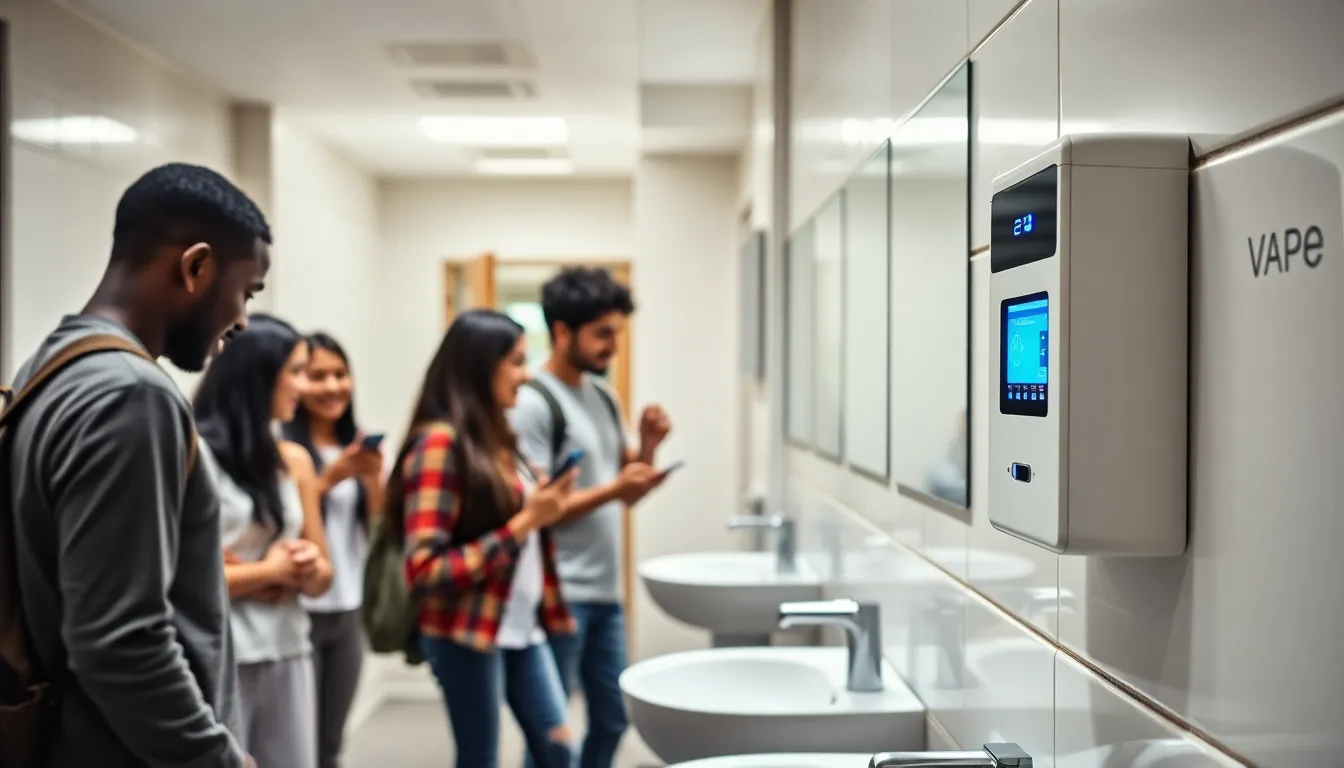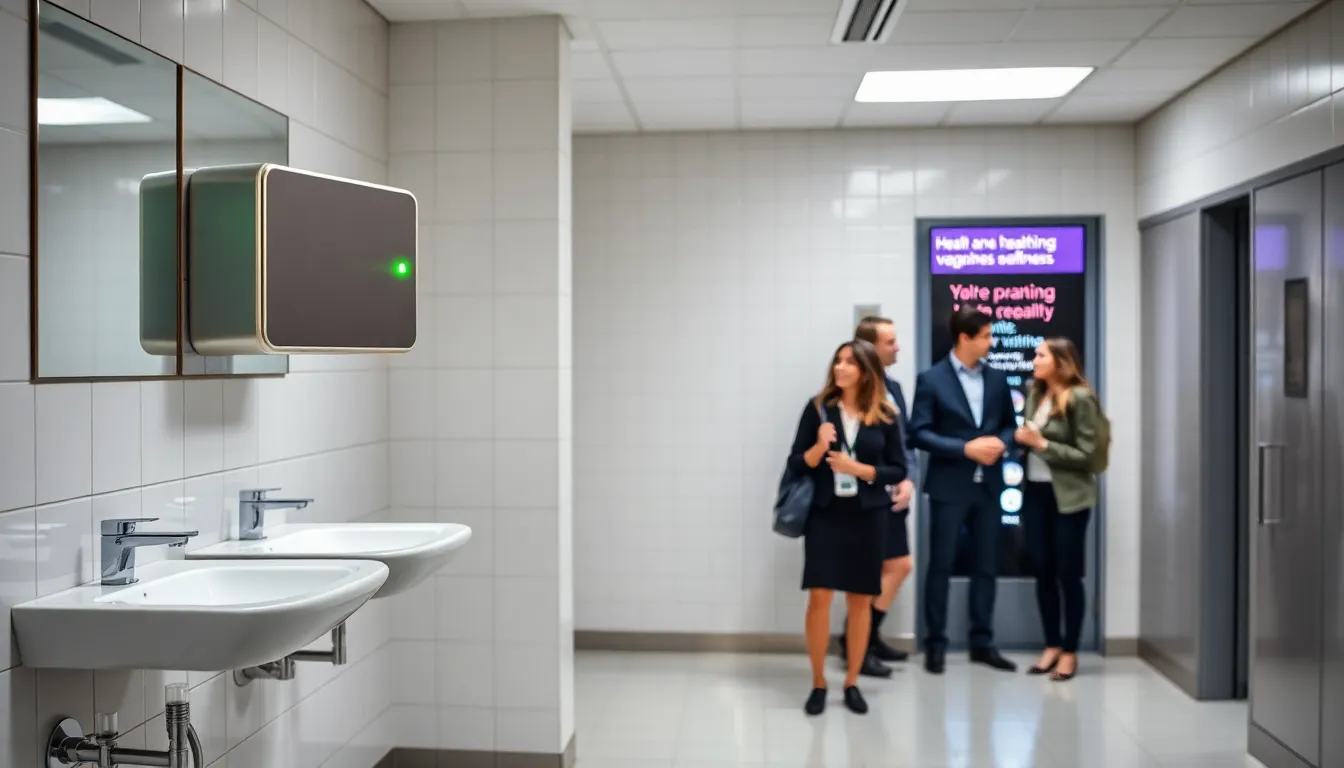As vapor clouds swirl more frequently in school bathrooms, administrators are left grappling with a new frontier of unexpected nuisances (and some honestly questionable choices). It turns out that vaping has quickly gone from a quirky habit to a mainstream trend among students. To combat this growing challenge, schools are increasingly turning to vape detectors. These devices, capable of sensing even the slightest whiff of vapor, may just be what the doctor ordered for today’s educational institutions. But how do they work, and are they truly beneficial? Let’s immerse and unravel the complexities behind vape detectors in school bathrooms while keeping the mood light – after all, who knew fighting vapors could be this interesting?
Table of Contents
ToggleVape Detectors In School Bathrooms

Vaping has exploded in popularity among teenagers, quickly eclipsing traditional smoking. Recent studies indicate that approximately 27% of high school students have reported using e-cigarettes. The appeal lies primarily in the bold flavors and sleek designs, making it easier to hide in plain sight. Meanwhile, social media further fuels this trend, showcasing an array of vape tricks that quickly go viral. With each new video, more students are drawn in, often unaware of the potential consequences. As a result, schools are left facing a complex dilemma: how to preserve a healthy environment while respecting individual freedoms.
Understanding Vape Detectors: How They Work
Vape detectors are surprisingly sophisticated pieces of technology. These devices use a mix of sensors and algorithms to identify vapor and aerosol produced by e-cigarettes. Lets break it down a bit further: the sensors detect specific chemicals associated with vaping, such as propylene glycol and vegetable glycerin. Once activated, the device sends alerts to school authorities, allowing them to address issues promptly. Installation is usually a straightforward process, often integrated into existing smoke detectors or installed independently. Schools can monitor the bathrooms discreetly, ensuring a proactive stance against vaping.
Benefits of Installing Vape Detectors
The advantages of vape detectors extend beyond mere apprehension of students caught vaping. First and foremost, they create a safer school environment. By reducing vaping rates among students, schools can foster better health outcomes overall. Also, these devices can camouflage their presence, leading to a culture of compliance among students. Not to mention, the installation of vape detectors can reflect positively on school administration, demonstrating a commitment to student well-being. Parents generally appreciate these steps, sparking trust in school management and reinforcing the idea that educational institutions prioritize student health.
Challenges and Limitations of Vape Detectors
But, no solution is without its challenges. One key concern surrounding vape detectors is their effectiveness in detecting all types of vaping products. For instance, devices designed to detect specific vapors might not catch every brand or formulation, leading to potential loopholes. Also, the potential for false alarms is real. Students might find themselves facing repercussions for misunderstandings, possibly leading to distrust between them and school authorities. Balancing security and privacy also presents a challenge. Some students may feel their freedom is being infringed upon, raising ethical questions about surveillance in spaces that traditionally offered more freedom.
Implementation Strategies for Schools
When it comes to implementation, an effective strategy is crucial. Schools should first assess their unique environment and student behaviors. Engaging stakeholders, including teachers, parents, and students in the decision-making process, can increase buy-in and understanding. Training staff on how to effectively respond to alerts can further enhance the functionality of vape detectors. Deployment should also cover high-traffic bathrooms, ensuring the most efficient use of resources. Regular evaluations of the device’s performance and impact can inform future adjustments, ensuring that the system adapts to changing dynamics in student behavior.
Legal and Ethical Considerations
The introduction of vape detectors opens up a can of worms about legal and ethical considerations. Firstly, privacy issues loom large. Students may argue that monitoring them constitutes an invasion of privacy, especially in areas typically seen as personal. Schools must tread carefully, navigating a complex web of regulations related to surveillance. Besides, transparent communication about the presence of vape detectors helps minimize backlash and contributes to a trust-building atmosphere. Establishing clear policies on the consequences of detection can further ensure fairness and clarity among students.
Future Trends in Vape Detection Technology
As technology evolves, so will vape detection systems. Future devices may integrate artificial intelligence, improving their ability to distinguish vaping from other activities, so minimizing false alerts. With the rapid advancement in sensor technology, detectors could become smaller, more discreet, and capable of detecting a broader range of substances. The future might also see real-time analytics, allowing schools to tailor interventions based on data-driven insights. Besides, as awareness of vaping’s health implications grows, students may be more receptive to these measures, creating a culture that values health and well-being.



